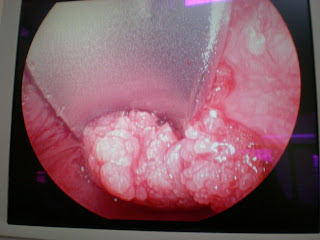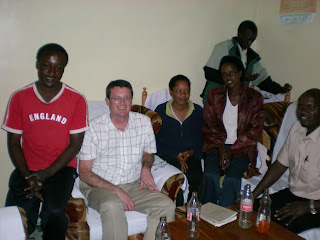 Aerial view of western Kenya on the way from Eldoret to Masai Mara.
Aerial view of western Kenya on the way from Eldoret to Masai Mara.
Travels of Kyle and Susan Cordes, including somewhat regular medical trips to Eldoret, Kenya.
 Aerial view of western Kenya on the way from Eldoret to Masai Mara.
Aerial view of western Kenya on the way from Eldoret to Masai Mara.
 Drs. Moore and Sisenda using the newly donated Stryker Sinus Endoscopy equipment. I'll also note in this picture that the OR's here were designed to take advantage of natural light since it is highly reliable! In the US, room lights would be shut off or turned down to make it easier to view the monitor when using equipment like this. Thankfully the monitor that was donated is bright enough that the staff doesn't have to try to cover the windows to darken the room.
Drs. Moore and Sisenda using the newly donated Stryker Sinus Endoscopy equipment. I'll also note in this picture that the OR's here were designed to take advantage of natural light since it is highly reliable! In the US, room lights would be shut off or turned down to make it easier to view the monitor when using equipment like this. Thankfully the monitor that was donated is bright enough that the staff doesn't have to try to cover the windows to darken the room.
















 So what's the big deal about a sunset picture? It's not like a Corona commercial on a beach or anything exotic... What it does signify is that clinic ended before sunset yesterday! We actually went to dinner last night(!) which was a big deal and a big improvement over the previous two night. Drs. Moore and Chacko, and Heather, one of our nurses were in surgery but still joined us at the restaurant later.
So what's the big deal about a sunset picture? It's not like a Corona commercial on a beach or anything exotic... What it does signify is that clinic ended before sunset yesterday! We actually went to dinner last night(!) which was a big deal and a big improvement over the previous two night. Drs. Moore and Chacko, and Heather, one of our nurses were in surgery but still joined us at the restaurant later.


